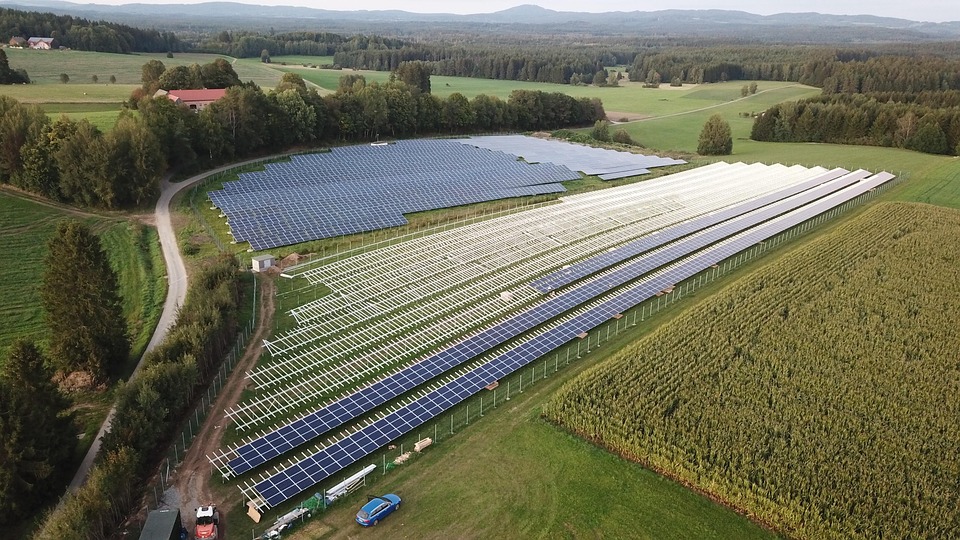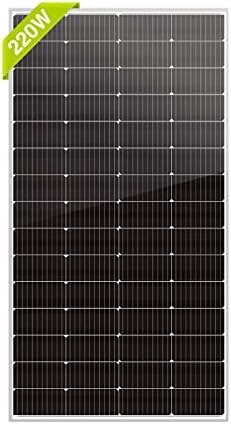# Finding the Perfect Fit: A Comparison of Solar Panel Types for Your Home
When I first decided to embrace a more sustainable lifestyle, the sun became my best friend. I remember standing outside, bright rays bouncing off my face, as I marveled at how something so common could provide all the energy I needed for my humble abode. The journey began with researching solar panels, which led me down a rabbit hole of options, specs, and styles. For anyone looking to harness the power of the sun in their home, understanding the different types of solar panels is crucial to finding the perfect fit. Let’s dive into this sunny world!
## Types of Solar Panels
### 1. Monocrystalline Solar Panels
#### Overview
Monocrystalline solar panels are often recognized for their high efficiency and sleek black appearance. Made from a single crystal structure, these panels convert sunlight into electricity with impressive efficiency rates—typically between 15% and 22%.
#### Pros
– **High Efficiency**: Because they’re made of high-purity silicon, monocrystalline panels extract as much energy as possible from sunlight.
– **Space-Efficient**: Given their higher efficiency, you might need fewer panels to achieve your energy needs, making them ideal for rooftops with limited space.
– **Long Lifespan**: They generally come with warranties of 25 years or more.
#### Cons
– **Cost**: They tend to be on the pricier side upfront compared to other options.
– **Heat Sensitivity**: Their efficiency drops slightly in high temperatures.
### 2. Polycrystalline Solar Panels
#### Overview
Polycrystalline panels, characterized by their bluish hue, are made from multiple silicon crystals melted together. While these panels are slightly less efficient than their monocrystalline counterparts, they still offer a solid performance.
#### Pros
– **Lower Cost**: Generally, polycrystalline panels are more budget-friendly, making them a popular choice for homeowners looking to cut costs.
– **Good Performance in Heat**: Unlike monocrystalline panels, their efficiency won’t drop as dramatically in higher temperatures.
#### Cons
– **Lower Efficiency**: With efficiency rates typically between 13% and 16%, you may need more panels to meet your energy requirements.
– **Space Requirements**: Larger setups may require more roof space.
### 3. Thin-Film Solar Panels
#### Overview
Thin-film panels, as the name suggests, are much thinner and can be made from various materials, including cadmium telluride or amorphous silicon. Their lightweight design allows for a variety of installation options.
#### Pros
– **Flexibility**: They can be installed on surfaces that may not support traditional panels, such as curved roofs or portable installations.
– **Lower Manufacturing Costs**: Production costs are generally lower, making them a cheaper option.
– **Good Performance in Low Light**: Thin-film panels sometimes outperform their crystalline counterparts in low-light conditions.
#### Cons
– **Lower Efficiency**: With efficiency rates ranging from 10% to 12%, you can expect to need more space.
– **Shorter Lifespan**: They typically come with warranties ranging from 10 to 20 years.
### 4. Bifacial Solar Panels
#### Overview
Bifacial solar panels can generate electricity from both sides, absorbing sunlight directly and reflecting off the ground or nearby structures. This innovative design maximizes energy production efficiently.
#### Pros
– **Increased Energy Production**: They can produce extra energy due to their dual-sided design, making them a potent option for open fields or rooftop installations with reflective surfaces underneath.
– **Durability**: They often last longer due to being constructed with durable materials.
#### Cons
– **Cost**: Their advanced technology usually comes with a higher price tag.
– **Installation Requirements**: They may require more sophisticated installation to fully capitalize on their benefits.
## Factors to Consider When Choosing Solar Panels
When deciding on the perfect solar panel for your home, several factors come into play:
### 1. Energy Needs
Before anything else, assess your energy consumption. What is your average kilowatt-hour (kWh) usage per month? This will determine how many panels you need.
### 2. Roof Space
The available roof area will significantly influence your choice. If space is limited, high-efficiency panels like monocrystalline might be more suitable.
### 3. Budget
Solar panels are an investment, so understanding your budget is crucial. Don’t forget to consider long-term savings from energy bills when evaluating upfront costs!
### 4. Local Climate
Your local climate will affect solar panel performance. If you live in a sunny place, you might favor high-efficiency options, while those in more temperate areas could opt for budget-friendly models.
### 5. Aesthetic Preferences
While function is vital, aesthetics also matter. Some homeowners prefer the sleek look of monocrystalline panels, while others may not mind the blue tint of polycrystalline panels.
## Pro Tips for Choosing Solar Panels
### Tip 1: Research Incentives
Check local, state, and federal programs for tax credits and incentives for solar installations. They can dramatically lower your initial investment.
### Tip 2: Get Multiple Quotes
It’s essential to get quotes from multiple installers to compare not only prices but also warranties and services offered.
### Tip 3: Consider Your Installer’s Reputation
Look for installers with a solid track record. Reading reviews and ratings can help ensure you choose a reliable partner for your solar journey.
### Tip 4: Monitor Advances in Technology
Solar technology is rapidly evolving. Stay informed about new developments that may offer more efficient or affordable options.
### Tip 5: Plan for Expansion
If you anticipate increasing your energy needs in the future, choose a system that allows for easy expansion.
### Tip 6: Optimize Installation Orientation
Work with your installer to ensure that your panels are set at the right angle and orientation to maximize sun exposure.
## Conclusion
Harnessing the sun’s energy is not just a trend; it’s a sustainable way to power your home and reduce your carbon footprint. With various solar panel types available, finding the perfect fit involves understanding their pros and cons and aligning them with your specific needs. Whether you opt for the sleek efficiency of monocrystalline, the cost-effectiveness of polycrystalline, the versatility of thin-film, or the innovative design of bifacial panels, the right choice will illuminate your life with renewable energy.
### Final Thoughts
Remember, investing in solar power is not just a financial decision; it’s a step towards a greener future. By doing your research and selecting the right panels, you can enjoy the spoils of sustainable living while basking in the sun’s warm glow. So gear up, explore your options, and let the sun shine bright on your new energy journey!



